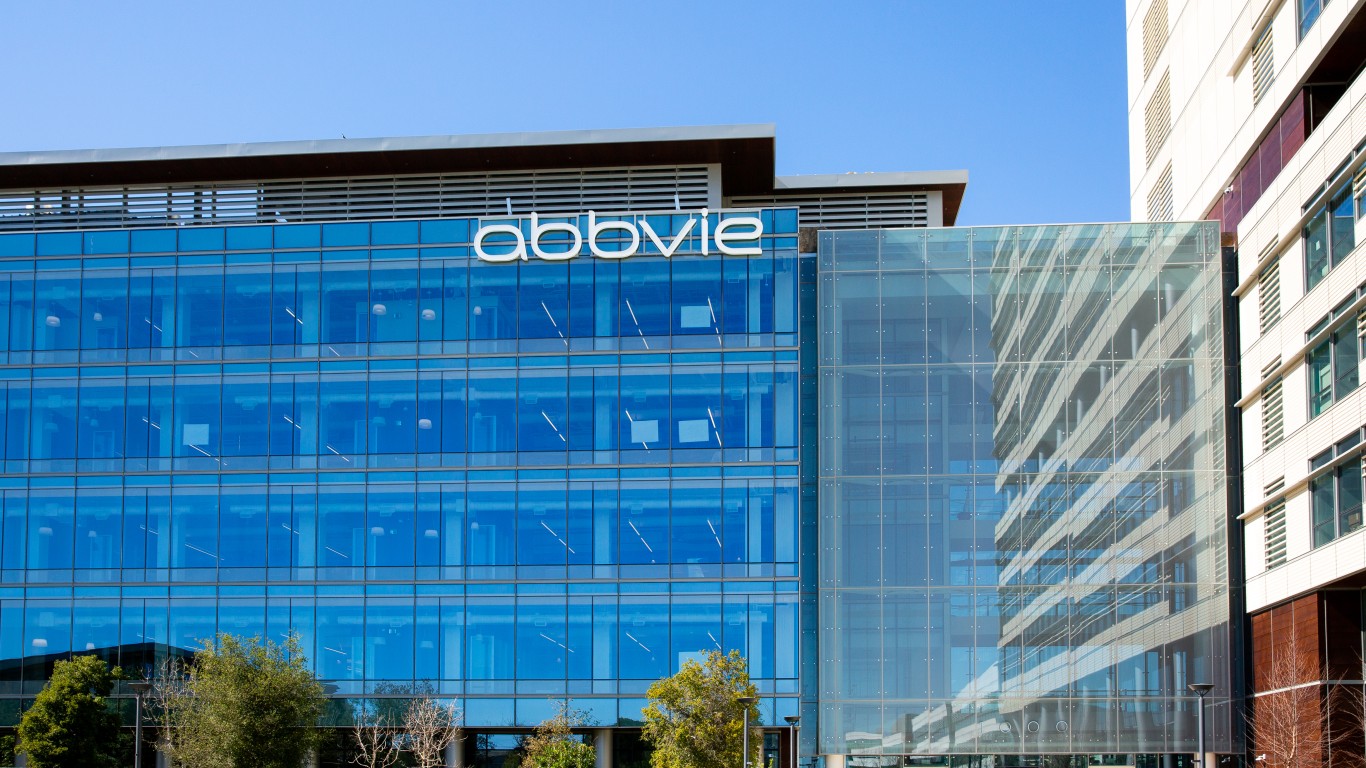Investing
7 High-Yielding Dividend Aristocrats Like AbbVie Are the Best Contrarian Ideas Now

Published:

Often when income investors look for defensive companies paying big dividends, they are drawn to the Dividend Aristocrats. And with good reason.
Since 1926, dividends have accounted for almost a third of the total return of the S&P 500. Regardless of whether the market is up, down or flat, regular dividend payments from high-quality blue chip stocks provide investors with a much better chance for success. With inflation staying frustratingly strong, and the potential for more stock market turbulence in the fourth quarter, it makes sense to look at quality stocks that pay dependable quarterly dividends.
The 67 companies that made the cut for the 2023 S&P 500 Dividend Aristocrats list have increased dividends (not just remained the same) for 25 years straight. However, the requirements go even further. The following attributes are also mandatory for membership:
We screened the list looking for stocks that have either been out of favor, got hit due to a one-off event, or have languished due to indifference from Wall Street analysts. With the downside potential still looming, and interest rates likely staying higher for longer, we thought it would be a good idea to look for companies on the Dividend Aristocrats that pay among the biggest dividends. That is, stocks investors can buy now and hold forever.
Seven top companies hit our screen. These Dividend Aristocrats all are rated Buy across Wall Street by the top firms. Yet, it is important to remember that no single analyst report should be used as the sole basis for any buying or selling decision.

One of the biggest concerns with AbbVie is what might eventually happen with the anti-inflammatory therapy Humira. It has some of the largest sales for a drug ever recorded. The company was concerned, so in June of 2019, it announced it had agreed to pay $63 billion for rival drugmaker Allergan. It was the latest merger in an industry where some of the biggest companies have been willing to pay a high price to resolve questions about their future growth. The purchase officially closed in May of 2020.
AbbVie may be nearing the limits of how far it can boost Humira’s price as cheaper competitors come to market. Allergan is already grappling with the problem as more alternatives to Botox emerge. Concerns over the potential for generics in both spaces have kept a lid on shares this year.
Shareholders receive a 4.37% dividend. Morgan Stanley has a target price of $193. The consensus price target is lower at $160.21. The stock closed trading Tuesday at $141.18.

The Distribution segment is involved in the regulated natural gas distribution and related sales operations in eight states. This segment distributes natural gas to approximately 3.3 million residential, commercial, public authority, and industrial customers. As of September 30, 2022, it owned 73,243 miles of underground distribution and transmission mains.
The Pipeline and Storage segment engages in the pipeline and storage operations. This segment transports natural gas for third parties and manages five underground storage reservoirs in Texas. It provides ancillary services customary to the pipeline industry, including parking arrangements, lending and inventory sales. As of September 30, 2022, it owned 5,652 miles of gas transmission lines.
Atmos shareholders receive a 2.78% dividend. BofA Securities has a $130 target price objective. That compares with a consensus target of $125.14 and Tuesday’s closing print of $107.66.

The pharmaceutical distribution business supports retail/mail/hospital/physician clients as well as drug manufacturers. The medical business manufactures its portfolio of medical products and distributes brand-name products to hospitals and physicians.
Shareholders receive a 2.20% dividend. Morgan Stanley recently reiterated an Overweight rating with a $100 target price. That compares to the lower consensus of $98.58, and Tuesday’s closing print of $91.

Consolidated Edison owns 62 area distribution substations and various distribution facilities; 39 transmission substations and 62 area stations; electric generation facilities with an aggregate capacity of 724 megawatts that run on gas and fuel oil; 4,348 miles of mains and 369,791 service lines for natural gas distribution; and 1 steam-electric generating station and 5 steam-only generating stations.
The company operates 572 circuit miles of transmission lines; 14 transmission substations; 86,794 in-service line transformers; 3,994 pole miles of overhead distribution lines; and 1,889 miles of underground distribution lines, as well as 1,867 miles of mains and 105,482 service lines for natural gas distribution. In addition, it is involved in the sale and related hedging of electricity to retail customers; and provision of energy-related products and services to wholesale and retail customers.
Shareholders receive a 3.70% dividend. The BofA Securities analysts have a price target set at $96, and the Wall Street consensus is at $88. The shares closed Tuesday trading at $87.79.

Essex currently has ownership interests in 246 apartment communities comprising approximately 60,000 apartment homes with an additional 6 properties in various stages of active development.
Shareholders receive a 4.40% dividend. Royal Bank of Canada’s $255 price objective compares with the slightly lower $243.85 consensus target and Tuesday’s closing price of $213.92.

The company is structured as a REIT, and its monthly dividends are supported by the cash flow from over 6,500 real estate properties owned under long-term lease agreements with commercial tenants.
To date, the company has declared 640 consecutive common stock monthly dividends throughout its 54-year operating history and increased the dividend 122 times since Realty Income’s public listing in 1994 and is a top real estate member of the S&P 500 Dividend Aristocrats index.
Investors receive a 6.65% distribution monthly. The Royal Bank of Canada has set its price target at $67. The consensus target is $63.36. The shares closed trading Tuesday at $47.38.
Target also provides dry grocery, dairy, frozen food, beverages, candy, snacks, deli, bakery, meat, and food service; electronics, which includes video game hardware and software, toys, entertainment, sporting goods, and luggage; and furniture, lighting, storage, kitchenware, small appliances, home décor, bed and bath, home improvement, school/office supplies, greeting cards, and party supplies, and other seasonal merchandise.
In addition, the company sells merchandise through periodic design and creative partnerships, and shop-in-shop experience; and in-store amenities. Further, it sells its products through its stores; and digital channels, including Target.com.
The company suffered a “Bud Light” moment this year after some merchandising of LGBTQ products struck a nerve with some shoppers. While not as bad as the beer giants conundrum, it still proved to be a huge negative that has seemingly subsided some.
Target shareholders receive a 4.05% dividend. Jefferies has a huge $165 target price. The consensus target is $149.66. The shares closed Tuesday’s session at $110.79.
These seven top Dividend Aristocrats all are trading at very reasonable levels, pay dependable dividends and are solid and safe ideas despite facing some headwinds this year. They will not only likely hold up if the big selling does return, but offer outstanding total return potential in 2023 and 2024 as well.
Retirement can be daunting, but it doesn’t need to be.
Imagine having an expert in your corner to help you with your financial goals. Someone to help you determine if you’re ahead, behind, or right on track. With SmartAsset, that’s not just a dream—it’s reality. This free tool connects you with pre-screened financial advisors who work in your best interests. It’s quick, it’s easy, so take the leap today and start planning smarter!
Don’t waste another minute; get started right here and help your retirement dreams become a retirement reality.
Thank you for reading! Have some feedback for us?
Contact the 24/7 Wall St. editorial team.